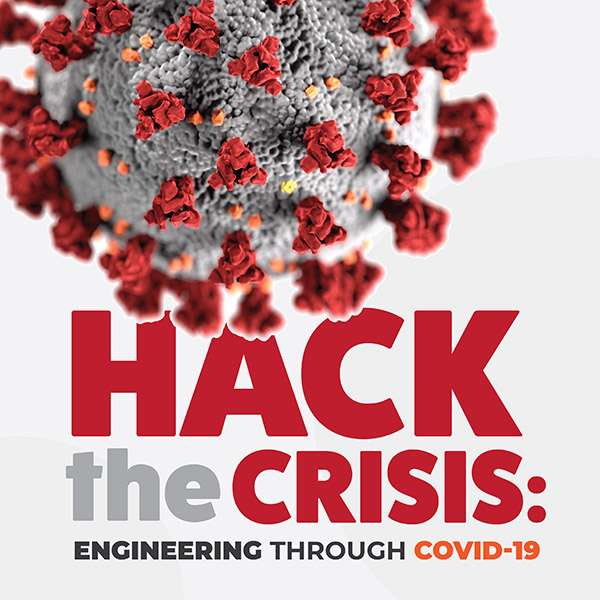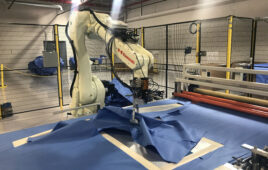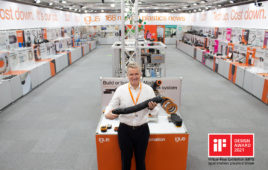The era of social distancing has not been a good one for trade shows and conferences, including those that we attend across the design engineering, fluid power, R&D and related spaces. The big news earlier this Spring was Hannover Fair moving from its traditional April dates to mid-July. One of the largest industrial trade shows in the world, this was no small undertaking. And yet, several weeks later, show organizers had to switch course again and decided to cancel the 2020 iteration altogether.
A handful of other events were outright cancelled, such as annual meetings of associations like NAHAD and the CFPA, as well as the Brooklyn 5G Summit and Houston’s enormous Offshore Technology Conference, which focuses on the lucrative oil & gas market.
Meanwhile, there are a good number of Spring shows that have postponed and rescheduled for the Fall months — already a busy time on the annual calendar. AUVSI XPONENTIAL, originally scheduled for May 6-7 in Boston, moved back to August 9-12 before deciding that a better bet was to move to Dallas from October 5-8. Similarly, MD&M East moved from New York in June to a Philadelphia in August. The months of August through October all look to be jam-packed with industry events, assuming that the situation in various states allows them to actually take place.
The infographic below shows what’s happened thus far in 2020, with cancelled shows in cyan, shows that are currently sticking to their original dates in magenta, and shows that have moved in orange (with their former dates/locations shown in gray).

A look at selected 2020 industrial trade shows and conferences, including ones that have been cancelled or moved. Infographic by Allison Washko. [Click to enlarge.]
“First, less than 5% of corporate exhibit managers have plans to participate in any live events prior to July 1, and some of those plans are still very tentative at the moment,” he said. “Second, 90% of our readers are under company-imposed travel restrictions that preclude them from attending trade shows and corporate events, only a tiny fraction of which are set to expire by June 1. Also, from a personal standpoint, all of the June trade shows and conferences I’ve been invited to speak at or attend have been cancelled, postponed, or converted into virtual events.”
Stanton said that his publication’s research shows that based on their current plans, most exhibiting companies plan to return to the show floor by the end of September, but about one-fifth have no plans to exhibit at any upcoming 2020 shows.
“Having said that, plans could shift considerably if a treatment or vaccine is made available,” he said. “Currently, 63% of exhibit managers say that a COVID-19 treatment would make them feel more comfortable about exhibiting at a trade show, while 81% say a vaccine would ease their concerns over mass gatherings.”
 Just last week, igus, a Cologne, Germany based manufacturer of plastic bearings, cable carriers and other motion plastic components, held a livestreamed press event, where product managers in multiple stations talked about the latest innovations. All of this occurred with social distancing and face masks — and was held in the company’s enormous booth that was to have been at Hannover Fair. Instead, the company built out the booth in their headquarters facility. Could this sort of thing be the new normal for a while?
Just last week, igus, a Cologne, Germany based manufacturer of plastic bearings, cable carriers and other motion plastic components, held a livestreamed press event, where product managers in multiple stations talked about the latest innovations. All of this occurred with social distancing and face masks — and was held in the company’s enormous booth that was to have been at Hannover Fair. Instead, the company built out the booth in their headquarters facility. Could this sort of thing be the new normal for a while?
Stanton said that about three-quarters of exhibit managers anticipate an increase in virtual/hybrid events, while a slight majority foresee developments such as decreased trade show attendance, fewer events, and a shift from large national events to small/regional alternatives. Just under half of them expect to see wider aisles and temperature checks on the show floor when events do resume.
“Interestingly, eight out of 10 also report that enhanced cleaning/sanitation policies at hotels, convention centers, and on airplanes would make them more likely to return to the show floor,” Stanton said.
Once things begin to open up, will we actually see the clustering of shows happening in the Fall months? Stanton thinks it’s possible, but only to an extent.
“Many shows scheduled for the second and even third quarter have been postponed until later in the year. In many cases, this has caused show organizers to truncate their timelines, at the very least shaving off time that would previously have been dedicated to exhibitors’ installation and dismantle — largely because venues are booked fairly solid with organizers clamoring for fall dates. But my gut tells me that only a fraction of those shows will happen, and many will be far smaller in scope, as a result of fewer exhibitors participating and a scaling back of exhibitors’ investments,” he said.
Stanton said that trade show exhibitors and vendors/suppliers to the trade show industry, including exhibit designers and producers have a bit of a dismal outlook for 2020, with only about one-fifth of them believing that the industry will rebound in 2020.
“The majority predict it will be at least second-quarter 2021 before the industry will return to normalcy and 13% of them anticipate that won’t occur until 2022 — while 5% question whether the industry will ever return to business as usual,” Stanton said.
In covering engineering and manufacturing over the past two months, however, one thing is clear. Strange times do seem to breed creativity and innovation. So, while we don’t know what will happen to the industrial tradeshow landscape in the months ahead, I’m confident that we’ll find a way to move forward and create something new and better. Maybe the typical conference or show of 2021 won’t look like those we had in 2019, but the right answer to connect sellers and buyers will find a way.
“I have no doubt that trade shows and face-to-face marketing will survive,” Stanton said. “The industry made it through 9/11, SARS, MERS, and the Great Recession — all of which felt insurmountable at certain moments. So, while prognosis for the immediate future is gloomy, you can mark my words. Trade shows will resume. The question is precisely when, and what will they look like.”
Filed Under: NEWS • PROFILES • EDITORIALS, Fighting COVID-19




